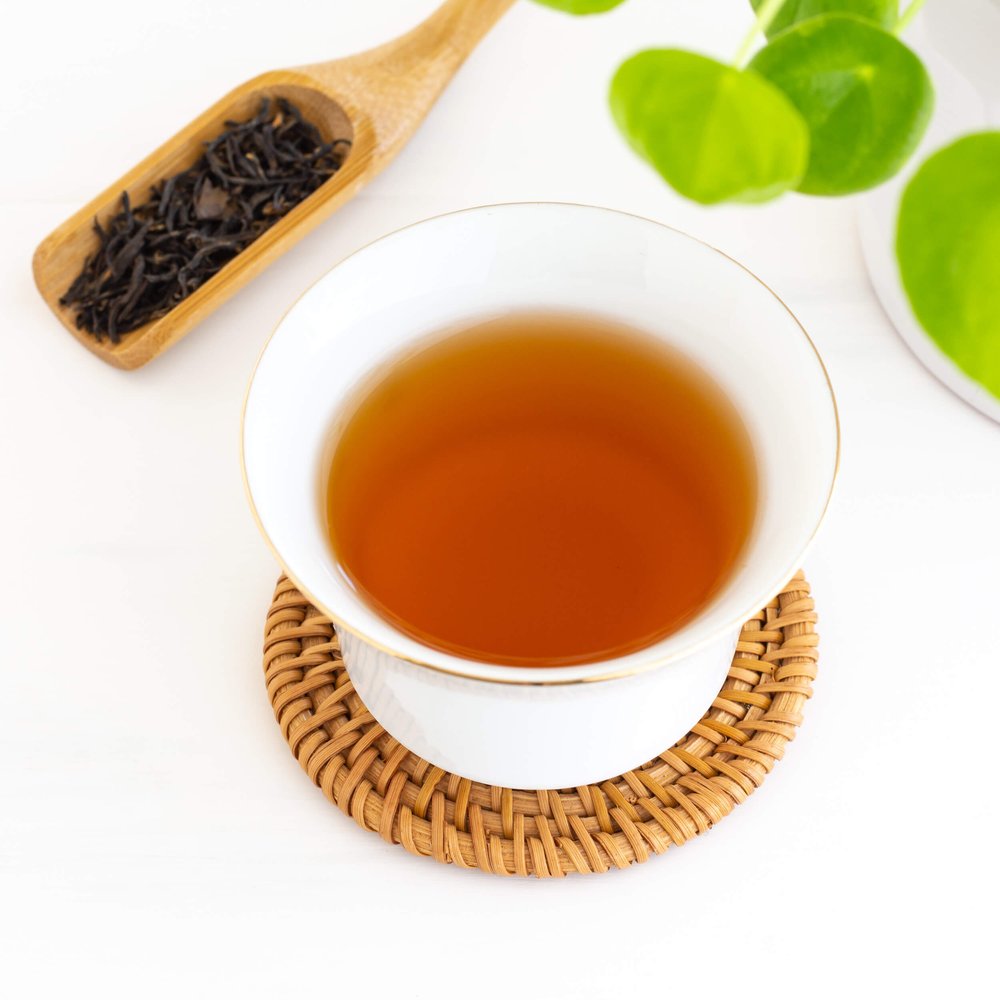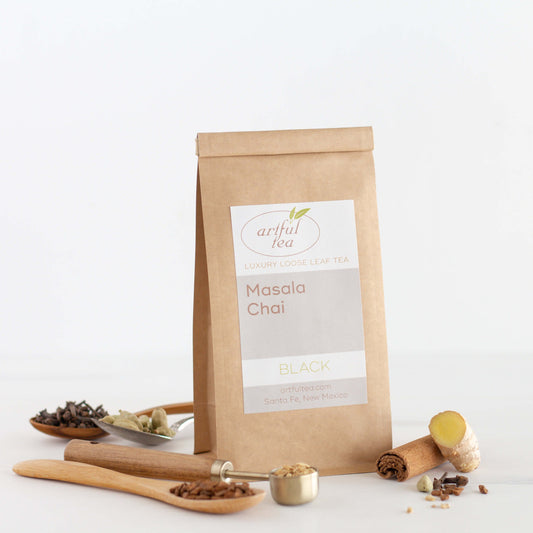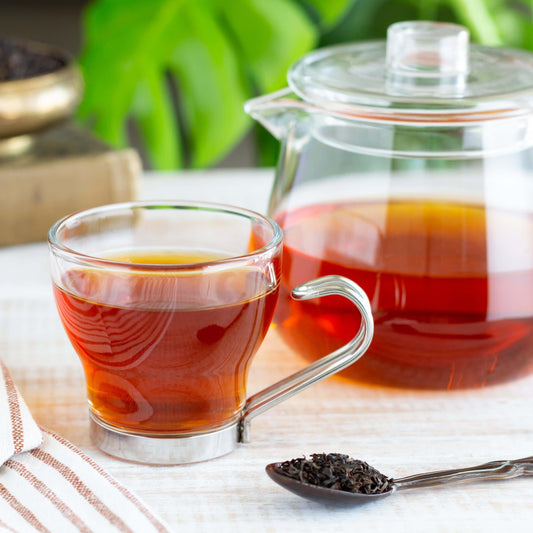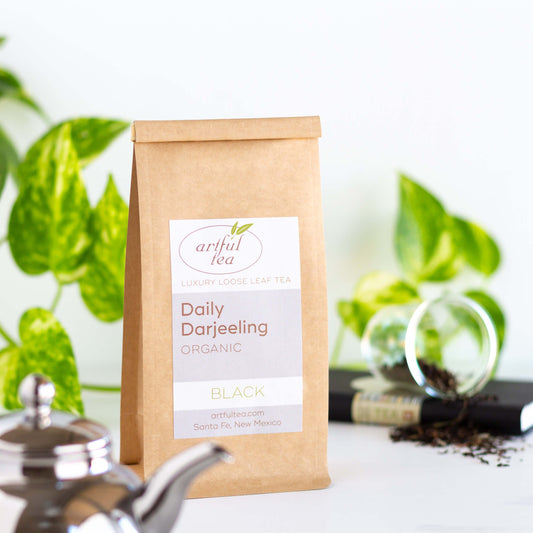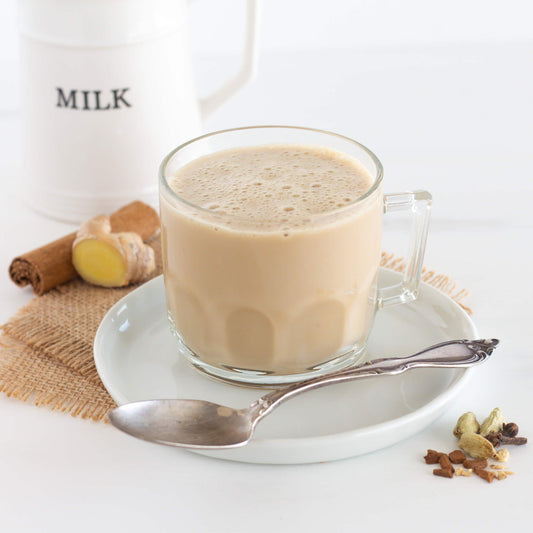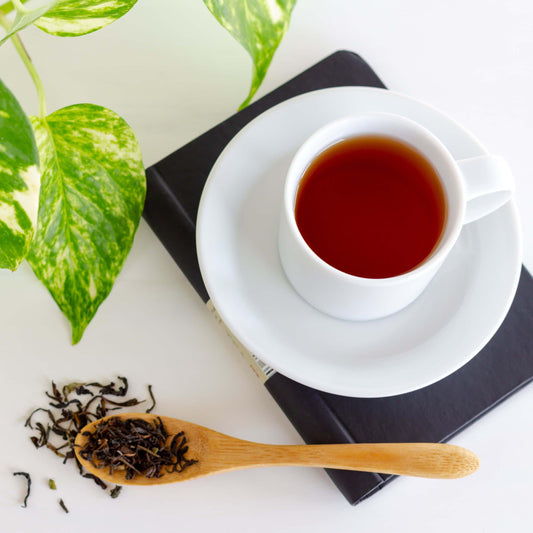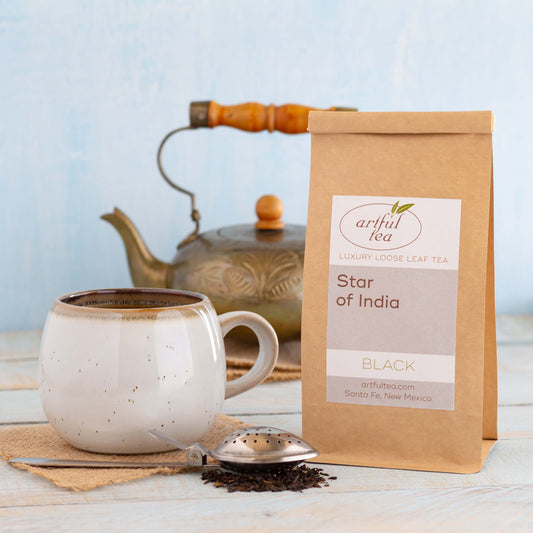The history of Indian black tea
The camellia sinensis tea plant is native to northern and eastern India and has been cultivated on a small scale for hundreds of years. Camellia sinensis var. assamica is the varietal of the tea plant indigenous to India, and typically makes for a stronger, more robust black tea. Camellia sinensis var. sinensis is indigenous to China, and is usually mellower and more subtle in character. Almost all Indian black teas, with the exception of Darjeeling, are produced from the camellia sinensis var. assamica varietal.
While tea had been grown in India for centuries, it was first produced on a large scale for commercial purposes by the British East India Company during British colonial rule. Since then, India has grown to become a dominant player in the tea industry, producing a huge volume of exported tea each year. Tea is also a popular drink in India itself, and India consumes almost 15 times as much tea as coffee.
Indian black tea vs. Chinese black tea
Most India black teas are made from camellia sinensis var. assamica, the varietal of the tea plant native to India. Most Chinese black teas are made from camellia sinensis var. sinensis, which is native to southern China. Indian teas tend to be stronger and more robust, while Chinese teas tend to be mellower and more delicate. One notable exception to this general rule is Darjeeling tea, which is grown in India using tea plants of the camellia sinensis var. sinensis varietal. This gives Darjeeling a lighter and more subtle character than other types of Indian black tea. Indian black teas tend to stand up well to the addition of milk and sweetener, whereas Chinese black teas are often best enjoyed on their own.
Indian black tea is classified according to a tea grading system that grades tea based on the quality, size, and appearance of the loose tea leaves. Common tea grades under this system include OP (Orange Pekoe), FBOP (Flowery Broken Orange Pekoe), and FTGFOP (Finest Tippy Golden Flowery Orange Pekoe). In general, teas that are made from whole tea leaves and have a higher percentage of golden tips and buds are more desirable under this system. Tea dust and fannings, which are often used to make tea bags, can also be graded on a related scale.
Tea growing regions in india
Many types of Indian black teas are named after the region in which they are grown, including teas from Assam, Darjeeling, and Nilgiri.
Assam
Tea is indigenous to the Assam region of India and has been growing there for hundreds of years. Assam tea is even the “state drink” of the region of Assam. Assam tea plants are of the camellia sinensis var. assamica variety. These teas are usually rich, bold, and full-bodied, and are often included in robust breakfast blends like Irish Breakfast and English Breakfast.
Darjeeling
Teas grown in Darjeeling are typically produced from the camellia sinensis var. sinensis varietal, which gives them a lighter, more delicate flavor. Although tea is indigenous to India, these tea plants were actually imported to India under British colonial rule. Darjeeling is sometimes referred to as the “champagne of teas.” First flush Darjeeling teas are harvested in the early spring and are often lighter and more delicate than second flush Darjeeling teas, making them especially desirable for connoisseurs.
Nilgiri
While not as well-known as Assam or Darjeeling, Nilgiri is an up-and-coming region in the world of tea. Nilgiri is located in the southwest of India. These teas tend to be slightly milder than hearty Assams, but more robust than Darjeelings. Like Assam teas, Nilgiri teas are produced from the native varietal of the tea plant, camellia sinensis var. assamica.
Indian black tea and masala chai
Masala Chai, which means “spiced tea” in Hindi, is a popular tea-based drink in the region. Masala Chai is often prepared by steeping black tea leaves, sugar, and a variety of spices in steaming milk. The resulting concoction is a sweet, spicy cup of tea with a full body and satisfying warmth. Masala Chai is an extremely popular drink in India, and has also gained popularity worldwide.
The benefits of Indian black tea
Like other types of tea made from the camellia sinensis tea plant, black tea has a variety of health benefits, including:
- Boosts energy
- Helps with focus
- Supports immune system
- Helps with digestion
- A lower-caffeine alternative to coffee
- Helps keep you hydrated
- It tastes good!
Our Indian black teas
Here at ArtfulTea we carry a variety of high-quality black teas sourced from India. These include regional varieties like Assam, Darjeeling, and Nilgiri, as well as tea blends like Star of India, Irish Breakfast, and English Breakfast. Many of these teas are ideal for making your own homemade version of chai, tea lattes, and more. They’re also delicious consumed on their own or with a splash of milk and sugar.
Assam Black Tea
Our organic Assam is a robust black tea with tremendous flavor. This 2nd flush tea has a grade of FBOP (Flowery Broken Orange Pekoe). It brews up a rich coppery color with a full body, hints of malt and toast, and moderate astringency. An excellent tea to start the day with!
Darjeeling Black Tea
Our second flush organic Darjeeling black tea has a medium body and a fresh, slightly nutty flavor. Daily Darjeeling features black tea leaves with green and gold highlights, and brews up into a beautiful pale amber color. With a grade of FTGFOP1, this is an extremely high-quality tea at a price point that allows you to drink it daily!
Nilgiri Black Tea
Nilgiri is a robust black tea from southwest India. The Nilgiri region of India is known for producing rich, well-rounded, and intensely aromatic teas, with environmental conditions that are perfect for growing high-quality black teas. Nilgiri has a full body with floral and fruity notes.
First Flush Darjeeling Black Tea
Our Organic Avongrove First Flush Darjeeling (FTGFOP1) is sourced from the Avongrove tea garden in Rangbhang Valley, Darjeeling. Located within view of the river Balasun, these tea plants are grown at high elevation ranging from 2,200 to 5,700 feet. Fresh, floral, and slightly astringent, this tea has all the wonderful qualities of a great first flush.
Star of India Black Tea
Star of India highlights three of India's premier tea-growing regions: Assam, Darjeeling, and Nilgiri. This balanced blend combines the rich and malty flavor of second flush Assam, the fruity and nuanced flavor of Nilgiri, and the floral, slightly nutty flavor of first flush Darjeeling for a beautiful coppery-colored tea that is similar to a breakfast blend.
Masala Chai Black Tea
This traditional chai blend includes cinnamon, cardamom, ginger root, and cloves blended with premium Ceylon tea. You can add milk and honey for a classic sweet, milky chai, or try it alone for a spicier cup.
FAQs about Indian black tea
Is Indian tea black tea?
The vast majority of tea grown in India is black tea. All true tea is made from the same plant; black teas are simply processed differently than other types of tea.
Where is black tea grown in India?
Prominent tea growing regions in India include Assam, Darjeeling, and Nilgiri. These areas produce famous teas named after the region in which they are grown.
Does Indian black tea have caffeine in it?
Like other types of black tea, Indian black tea does contain caffeine. While the exact caffeine levels in a particular type of tea vary depending on a wide variety of factors, in general Indian black tea contains about half as much caffeine as coffee.
Is tea originally from India?
The camellia sinensis tea plant is native to northeastern India and southwestern China, and has been cultivated in these regions for hundreds of years.
